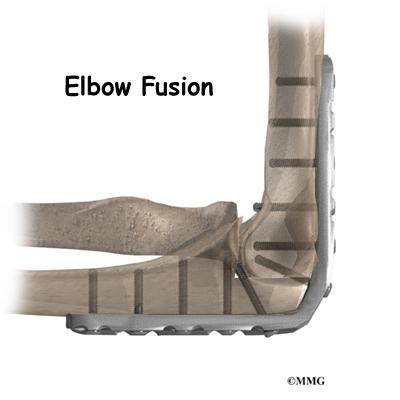Elbow Fusion

Overview
Elbow fusion, also known as arthrodesis, is a surgical procedure used to correct issues within the elbow joint. It’s often resorted to when the elbow joint is severely damaged and other treatments have failed to alleviate pain or improve functionality. The procedure involves fusing the bones within the joint together to restrict movement and reduce pain. Although it’s not common, patients enduring extreme discomfort or joint instability from conditions like severe arthritis or trauma may benefit from elbow fusion.
Types
While elbow fusion surgery is essentially the same procedure, it can be categorized based on the specific techniques adopted:
– Open Elbow Fusion: This technique involves a large incision made over the elbow joint for the surgeon to access and fuse the bones together.
– Minimally Invasive Elbow Fusion (Arthroscopy): Here, smaller incisions are made where tiny instruments and a camera are inserted to perform the fusion.
The choice between these types is dependent on several factors, including the severity of the condition, the patient’s overall health, and the surgeon’s experience.
Causes
Elbow fusion surgery is typically recommended when the elbow joint is severely damaged, and conservative treatment methods have failed. This damage can result from:
– Severe arthritis, both osteoarthritis and rheumatoid arthritis
– Significant trauma to the elbow joint
– Infection in the elbow that has damaged the joint
– Tumor
– Failed previous elbow surgery
Symptoms
Those needing elbow fusion surgery often experience:
– Chronic elbow pain
– Limited range of motion
– Joint instability
– Difficulty in performing daily activities
Diagnosis
The diagnosis step involves a detailed consultation with the doctor where they review your medical history and conduct a physical examination. Imaging tests like X-ray, CT scan, or MRI may also be necessary. These tests will help your doctor visualize the extent of joint damage and determine whether elbow fusion would be the appropriate treatment for you.
Treatment Options
There are conservative treatments and surgical options that doctors consider before resorting to elbow fusion surgery. These include:
– Medication: Pain relievers and anti-inflammatory drugs, corticosteroid injections.
- Physical therapy: Strengthening and stretching exercises to help improve functionality and reduce pain.
– Assistive devices: Wearing braces, or using canes and walkers to help ease the pressure on the elbow.
– Joint replacement: This is a surgical method where the damaged joint is replaced with an artificial one.
Living With Elbow Fusion
After elbow fusion surgery, you will experience restricted movement in your elbow. However, this should be compensated by a considerable reduction in pain, an improved ability to bear weight, and overall improved function. Here are some tips for managing life post-surgery:
– Perform strength-building exercises regularly as advised by your physical therapist to boost muscle functionality around the fused joint.
– Employ assistive devices if needed.
– Follow the prescribed medication regime to manage any residual pain.
– Attend regular check-ups to monitor the fused joint’s health over time.
When to Seek Help
Post-surgical warning signs that should prompt immediate medical attention include:
– Intense pain, swelling, or redness around the elbow.
– Drainage of pus from the surgical site.
– Significant increase in elbow immobility.
– Fever, chills, or other signs of infection.
Remember, elbow fusion surgery is a serious surgical treatment, typically the last resort. Always seek professional medical advice to explore all available treatment options for relieving elbow pain and improving function.
